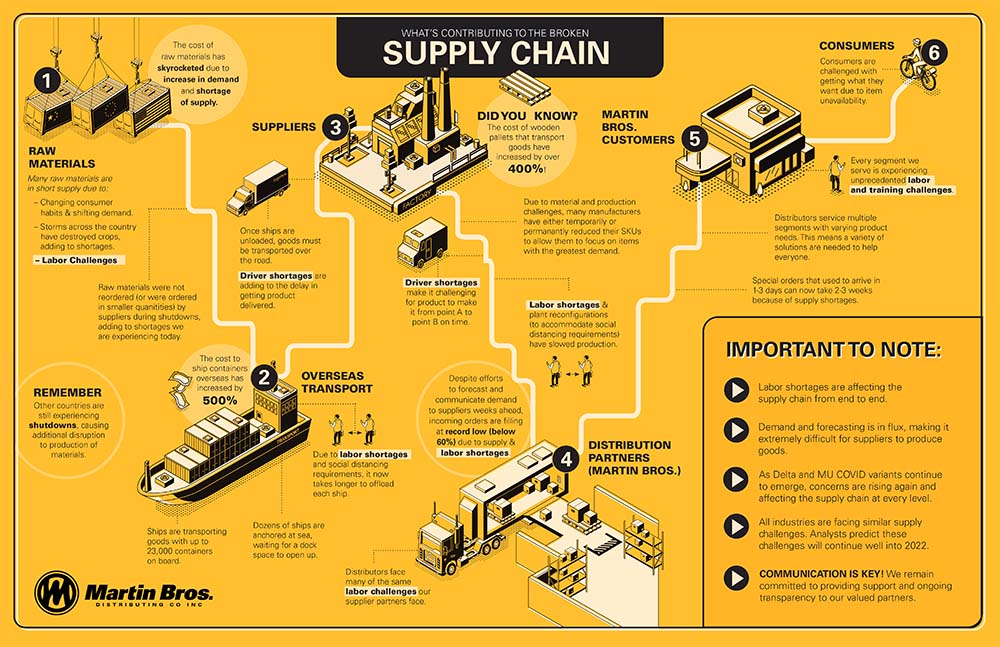In today’s challenging environment, it may seem impossible to know what food will be available from week to week. We’re being forced to work with less – less supply and less staff. Watch the video below explaining what's contributing to the broken supply chain.
Even in good times, being able to work with fewer items is a good practice. Working with less can help train new or less seasoned employees, and let's face it: less product on the shelves can equal more money in the bank.
When reviewing your items and considering potential changes in your operation, it's important to think out of the box. Here are a few tips to help you be ready and able to keep customers happy while supporting your team and maintaining profit while adjusting to less supply.
- Consider making your menu items so they can be switched out with a different protein. For example, market your sandwich items that leave the protein up to the customer or to what is in supply. The options could be burger, grilled chicken, breaded chicken, pulled pork, pulled beef or pulled chicken, for example.
- Reduce your menu offerings. Consider looking at slow-moving items or items that include products that are in short supply. Take them off of the menu for now with the option of reintroducing them when product is more plentiful.
- Create new items based on what is in good supply. You might be surprised at the level of support these items receive from your customers. Ask your distributor representative what products are in good supply and go from there.
- Be ready to improvise! If you’re short on chicken wings, for example, consider boneless wings or strips…or “pork or pollock wings”…or make your own chicken wings using other bone-in options. If you can’t get your regular soup, consider a new one that is in stock or use speed scratch products to make your own limited time special. Keep the ideas coming!
- Consider a simple black and white menu that you can more easily and less expensively change as needed.
- Know what can be substituted for your most popular items. For example, ground pork or ground chicken might be substituted for ground beef. Greek yogurt makes a great substitute for sour cream. Haddock for cod, etc. etc.
- Lean on your resources to identify solutions! Ask your distributor representative, a broker or a vendor representative. Do your research online. Ask a trusted colleague.
We’re better together!
Looking for tips on making it work with less staff? Click here to learn more!
Click below 👇 to listen as we discuss ways to lead through supply chain challenges and more!






